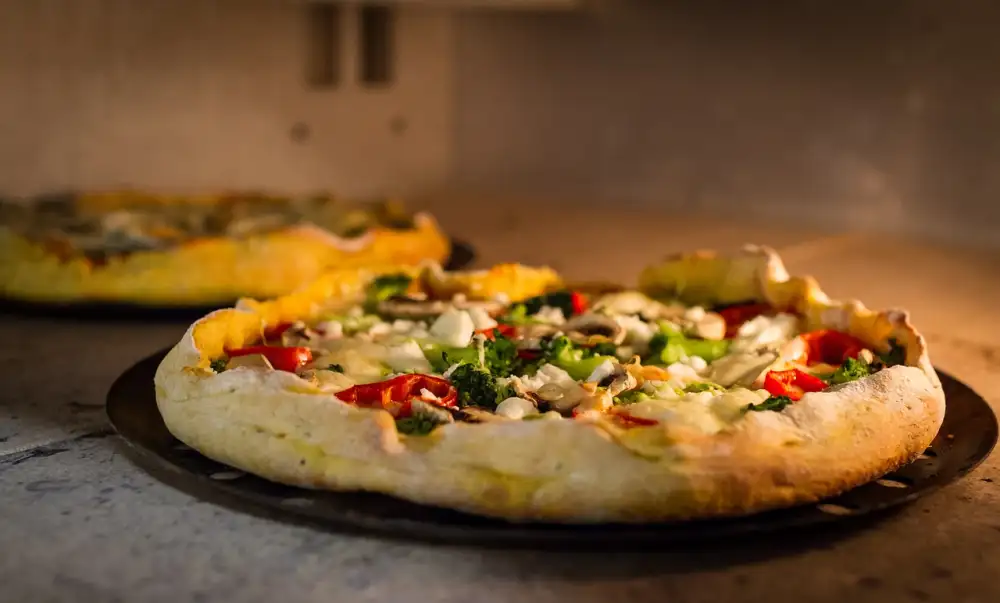Master the Art of Cooking with a Convection Oven: Elevate Your Home Cooking Experience!

Are you tired of unevenly cooked dishes and lengthy cooking times? It's time to upgrade your kitchen with a convection oven! Convection ovens have become increasingly popular among home cooks due to their ability to cook food faster and more evenly. Whether you're a novice or an experienced chef, mastering the art of cooking with a convection oven will elevate your culinary skills to new heights. In this article, we will explore how convection ovens work, the benefits they offer, and provide some useful tips for cooking with them. So get ready to revolutionize your home cooking experience with the power of convection!
How Convection Ovens Work
Convection ovens are designed to circulate hot air evenly throughout the cooking chamber, resulting in faster and more efficient cooking. Unlike traditional ovens, which rely on radiant heat, convection ovens have a fan that continuously blows hot air onto the food.
This circulating air helps to eliminate cold spots and ensures that the heat reaches every part of the dish. As a result, food cooks more quickly and evenly, reducing cooking times by up to 25%. This is especially beneficial when roasting meats or baking pastries, as it helps to achieve a crispy exterior while keeping the inside moist and tender.
The fan in a convection oven also helps to remove moisture from the food's surface, which aids in browning and crisping. It creates a dry environment that is ideal for achieving golden-brown crusts on bread or perfectly seared meats.
Additionally, convection ovens often have adjustable temperature settings, allowing you to choose between regular baking mode or convection mode. In convection mode, the fan operates at full speed, while in regular baking mode, it is turned off.
Overall, the mechanics of a convection oven work together to provide consistent and efficient cooking results. Whether you're baking cookies or roasting vegetables, a convection oven can help you achieve professional-quality dishes with ease.
Benefits of Using a Convection Oven
There are several benefits to using a convection oven that can greatly enhance your cooking experience. Firstly, convection ovens cook food faster and more evenly than traditional ovens. The fan inside the oven circulates hot air, ensuring that heat is distributed evenly throughout the cooking process. This results in shorter cooking times and more consistent results.
Additionally, the even distribution of heat in a convection oven allows for better browning and crisping of food. Whether you're roasting vegetables or baking cookies, you can expect a golden brown finish that is both visually appealing and delicious.
Convection ovens also offer versatility in terms of cooking different types of dishes. With the ability to adjust temperature and airflow, you can easily switch between baking, roasting, broiling, and even dehydrating. This makes it an ideal appliance for those who enjoy experimenting with various recipes and techniques.
Furthermore, using a convection oven can lead to healthier cooking. The faster cooking time means less exposure to heat, which helps retain nutrients in the food. Additionally, the even heat distribution reduces the need for excessive oil or butter when roasting or baking.
Lastly, convection ovens are energy-efficient compared to traditional ovens. The shorter cooking times mean less energy consumption overall. This not only saves you money on utility bills but also reduces your carbon footprint.
In conclusion, the benefits of using a convection oven are numerous: faster and more even cooking, better browning and crisping, versatility in cooking methods, healthier meals, and energy efficiency. By incorporating a convection oven into your kitchen arsenal, you can elevate your home cooking experience to new heights!
Tips for Cooking with a Convection Oven
1. Adjust cooking time and temperature: Convection ovens cook food faster than traditional ovens, so reduce the cooking time by about 25% and lower the temperature by 25 degrees Fahrenheit.
2. Use shallow pans: Shallow pans allow hot air to circulate more effectively, resulting in even cooking and browning.
3. Avoid overcrowding: Leave enough space between dishes to allow hot air to circulate freely. This ensures that each dish cooks evenly.
4. Use low-sided baking sheets: Low-sided baking sheets are ideal for convection cooking as they allow the hot air to reach all sides of the food, promoting even browning.
5. Rotate dishes halfway through cooking: To ensure even browning, rotate dishes halfway through the cooking process. This helps prevent one side from becoming overcooked or undercooked.
6. Keep an eye on delicate foods: Delicate foods like cakes and pastries may cook faster in a convection oven. Keep a close eye on them to prevent overcooking or burning.
7. Reduce recipe temperatures: When using recipes designed for traditional ovens, reduce the recommended temperature by 25 degrees Fahrenheit when using a convection oven.
8. Check for doneness early: Since convection ovens cook faster, start checking for doneness a few minutes earlier than the recommended cooking time in recipes.
Remember to experiment and adjust your techniques based on your specific convection oven model and personal preferences. Happy cooking!
Convection Oven vs. Traditional Oven: What's the Difference?
Convection ovens and traditional ovens may appear similar, but they operate differently. The main difference lies in how heat is distributed during cooking. In a traditional oven, heat is generated from the bottom or top of the oven and slowly spreads throughout. This can result in uneven cooking and longer cooking times.
On the other hand, convection ovens have a fan and exhaust system that circulates hot air evenly throughout the oven. This ensures that food cooks more quickly and evenly. The circulating air also helps to eliminate hot spots, resulting in perfectly cooked dishes every time.
Another key difference is temperature control. Convection ovens often require lower temperatures compared to traditional ovens because the circulating air speeds up the cooking process. This means you can save energy and reduce cooking time without compromising on taste or texture.
It's important to note that not all recipes are suitable for convection cooking. Some delicate baked goods, such as soufflés or custards, may not fare well in a convection oven due to the strong airflow. However, most recipes can be easily adapted by reducing the temperature or adjusting the cooking time.
In summary, while traditional ovens have their merits, convection ovens offer superior cooking performance with faster and more even results. Whether you're baking, roasting, or broiling, a convection oven will elevate your home cooking experience to new heights of convenience and precision.
Popular Recipes to Try in a Convection Oven
1. Roasted Chicken: A convection oven ensures even browning and crispy skin. Season the chicken with your favorite herbs and spices, then roast it at a slightly lower temperature than you would in a traditional oven for moist and flavorful results.
2. Baked Goods: Convection ovens are perfect for baking cookies, cakes, and pastries. The circulating hot air helps create a uniform rise and golden crust. Just remember to reduce the baking time by about 25% to prevent overcooking.
3. Pizza: Craving a crispy, restaurant-style pizza? Use a convection oven! The high heat and airflow will give you perfectly browned crusts while melting the cheese evenly.
4. Vegetables: Roasting vegetables in a convection oven brings out their natural sweetness and enhances their texture. Toss them with olive oil, salt, and pepper before roasting for a delicious side dish or addition to salads.
5. Fish Fillets: Cooking fish fillets can be tricky, but a convection oven makes it easier. The hot air circulation ensures even cooking without drying out the fish. Add some lemon slices and herbs for extra flavor.
6. French Fries: Want crispy fries without deep frying? Cut potatoes into thin strips, toss them with oil and seasonings, then spread them on a baking sheet in a single layer. The convection oven will give you perfectly golden fries with less oil.
7. Lasagna: Make your lasagna even more delicious by using a convection oven. The hot air will cook it evenly, ensuring each layer is perfectly cooked through while creating a golden crust on top.
Try these popular recipes in your convection oven to elevate your home cooking experience!
Cleaning and Maintenance of Convection Ovens
Cleaning and maintaining your convection oven is essential for its longevity and optimal performance. Here are some tips to help you keep your oven in top shape:
1. Regular Cleaning: After each use, wipe down the interior of the oven with a damp cloth or sponge to remove any food residue or spills. Be sure to also clean the racks and trays.
2. Self-Cleaning Function: Many convection ovens come with a self-cleaning function. Follow the manufacturer's instructions on how to use it properly. This feature heats the oven to high temperatures, turning food residue into ash that can be easily wiped away.
3. Oven Door: Clean the oven door regularly using a mild detergent and water solution. Avoid using abrasive cleaners that could damage the glass.
4. Ventilation System: Check and clean the ventilation system regularly to ensure proper airflow. Remove any debris or grease buildup that may hinder its performance.
5. Replace Filters: If your convection oven has filters, such as charcoal or grease filters, check them periodically and replace them when necessary. This will help maintain good air quality inside your kitchen.
6. Exterior Cleaning: Wipe down the exterior of your convection oven with a soft cloth and mild detergent as needed. Avoid using harsh chemicals or abrasive materials that could scratch the surface.
7. Professional Maintenance: Consider scheduling professional maintenance for your convection oven at least once a year, especially if you use it frequently or notice any issues with its performance.
By following these cleaning and maintenance tips, you can ensure that your convection oven remains in excellent condition, allowing you to continue enjoying its convenience and efficiency in your cooking endeavors!
In conclusion, convection ovens are a game-changer in the world of home cooking. With their ability to distribute heat evenly and cook food faster, they offer convenience and efficiency like no other. Whether you're a novice or an experienced cook, a convection oven can elevate your culinary creations to new heights. So why not embrace this modern technology and take your cooking skills to the next level? Say goodbye to unevenly cooked dishes and hello to perfectly browned and delicious meals. With a convection oven in your kitchen, the possibilities are endless. Happy cooking!
Published: 28. 01. 2024
Category: Home



